Weeding Warriors
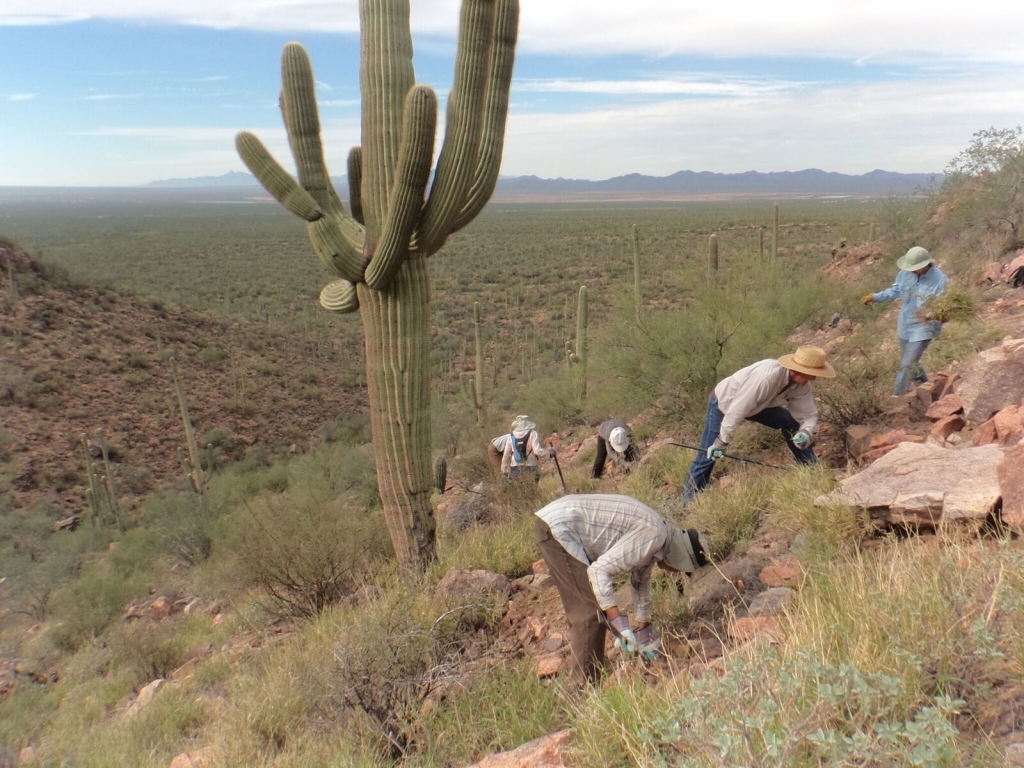
Writer Joseph J. Airdo
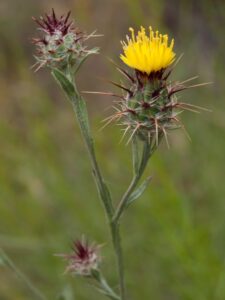


In the vast expanse of our Sonoran Desert, a battle is being waged by a largely unseen enemy. Invasive plant species, introduced by humans and spreading rapidly, threaten to upset the delicate balance of this fragile ecosystem. Leading the charge against these invaders is the Central Arizona Conservation Alliance and its community-driven initiative, Desert Defenders.
Founded in 2012, CAZCA is an initiative of the Desert Botanical Garden. Its mission is to conserve open spaces and natural areas in central Arizona for current and future generations.
“These areas are crucial for the ecosystem, local economy and overall sustainability of life in the desert,” says Challie Facemire, CAZCA’s program director. “Parks and open spaces with thriving native plant life aid in aquifer recharge, heat mitigation and provide recreational opportunities for people to enjoy.”
Of course, there are also the economic benefits of these natural areas.
“The unique beauty of the Sonoran Desert attracts tourists who come to hike in places like Camelback Mountain and the Phoenix Mountain Preserve,” Facemire explains. “By conserving these open spaces, CAZCA aims to preserve their ecological, recreational, economic, health and community benefits for the region.”
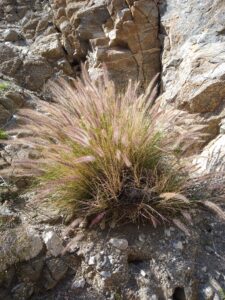


Fighting Flora Foes
Invasive plants pose one of the most significant threats to the health of the Sonoran Desert. Species like buffelgrass, fountain grass, stinknet and red brome create monocultures, displacing native plants and reducing habitats for local fauna.
“Native plants have deeper root structures that contribute to aquifer recharge, while invasive plants may negatively impact water resources,” explains Facemire, noting that many invasive plants are also highly fire-prone, increasing the risk of severe damage in ecosystems not adapted to fire.
“When a fire occurs in an area dominated by invasive plants, it spreads more easily, posing a threat to structures and property. Additionally, in the aftermath of a fire, invasive plant species often regenerate more rapidly than native flora, which can increase the risk of recurrent wildfires within the affected region.”
Juanita Armstrong, a natural resource specialist at Maricopa County Parks and Recreation, notes that invasive species have played a significant role in our community’s recent wildfires.
“The Cave Creek Complex Wildfire back in the 1990s was fueled by red brome and likely schismus (Mediterranean grass),” she explains. “Stinknet, red brome and Mediterranean grass fueled [2020’s] East Desert and Ocotillo fires, [while last summer’s] Diamond Fire [in north Scottsdale near McDowell Mountain Regional Park] was red brome and schismus alone.”
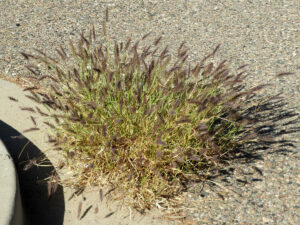


Facemire adds that buffelgrass, introduced to Arizona in the 1930s for erosion control and cattle forage, has become a particularly significant concern as it spreads quickly and greatly increases risks associated with wildfires. This has prompted innovative projects like the 2019 Buffelgrass Blues Project, created by then CAZCA engagement coordinator Annia Quiroz, which used environmentally friendly blue chalk paint to highlight the invasive grass on Piestewa Peak, raising public awareness and encouraging its removal.
To combat these threats, CAZCA launched Desert Defenders, a collaborative community science program dedicated to identifying, mapping and removing invasive species in local parks and preserves. Volunteers use apps to map invasive plants, enabling managers and volunteers to take action and organize removal events.
“Community involvement is key to preventing the spread of invasive species, as many of these plants originate from or enter urban areas,” says Facemire, emphasizing the importance of volunteer efforts. “By removing invasive species from neighborhoods, residents can help prevent their spread into nearby preserves and open spaces.
“The Maricopa County Parks and Recreation Department relies on a large volunteer group at each park, and the McDowell Sonoran Conservancy also has volunteers working in the McDowell Sonoran Preserve. The McDowell Sonoran Conservancy’s team educates new volunteers, teaches them how to perform the work and gets them started.”
The combined efforts of volunteers and organizations like the McDowell Sonoran Conservancy and Maricopa County Parks and Recreation have made a significant impact on the control of invasive species in the Sonoran Desert. Through research and hands-on removal, they have successfully removed invasive species from vast areas, including portions of the McDowell Sonoran Preserve and several regional parks.
“While exact numbers may be difficult to determine, their work over the past decade has been extensive and remarkable, covering acres upon acres of invasive plants,” Facemire notes. “These collaborative efforts demonstrate the power of community involvement in protecting and preserving the fragile desert ecosystem.”
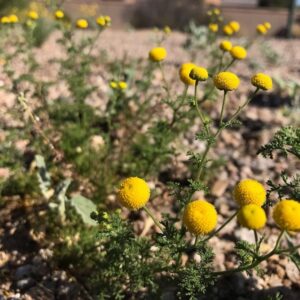


Invasive Intervention
Removing invasive plants from the Sonoran Desert is a challenging and ongoing task. The goal is to protect the native ecosystem and its inhabitants, ensuring that the desert remains enjoyable for visitors. Mapping areas with invasive plants helps managers plan removal days, but the methods vary based on the plant species and infestation severity.
“When the infestation is severe, land managers may use herbicides to control the invasive plants,” Facemire explains. “For volunteer-led efforts, invasive grasses like stinknet and buffelgrass are often pulled by hand. Buffelgrass can be more challenging to remove because of its ability to regrow from root nodes, requiring extra care to ensure complete removal.”
Recent advancements in technology have also aided in the fight against invasive grasses. In a pilot project at Apache Junction Park, drones were used to spot-treat buffelgrass from above, avoiding other plants and reducing the need for manual labor. This method allows for more efficient treatment of hard-to-reach areas and can save time and energy for both volunteers and staff.
“Community involvement is still the most crucial component,” says Facemire, noting that in the case of Apache Junction Park, the neighborhood helped identify the invasive grasses, which enabled the effective deployment of the drones. “By working together and utilizing technology, we can better protect our ecosystems from the harmful impacts of invasive species.”
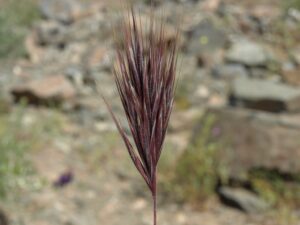


Facemire adds that community members have a unique opportunity to contribute to the preservation of our beautiful desert landscape. By educating ourselves about invasive species, participating in volunteer efforts, and being mindful of our own yards and hiking practices, we can all play a part in protecting the Sonoran Desert for generations to come.
“One big thing people can do to help stop the spread of invasive species is clean their boots before and after a hike, make sure their pets are clean if they are going along, and clean out car tires before and after,” Facemire advises. “This helps stop the transport of seeds.”
CAZA’s program director reflects on her own journey in understanding the challenges posed by invasive species in Arizona.
“Through my degree program, I gained knowledge about invasive species and their detrimental effects on ecosystems,” Facemire explains. “However, diving into the specific challenges of Arizona has provided a deeper understanding of the local issues.
“Learning about the various methods of invasive species removal, including both manual and technological approaches, has given me insight into the hard work and dedication required for this task. I’ve come to appreciate the efforts of volunteers and those who actively participate in the preservation of the environment.”
The battle against invasive species in the Sonoran Desert is far from over, but with the dedication of organizations like CAZCA and the power of community collaboration, we can make a difference. By uniting in our efforts to protect this fragile ecosystem, we ensure that the beauty and wonder of the desert will endure for generations to come.
“Connecting with individuals who share a passion for combating invasive species has been a rewarding experience,” Facemire says. “Meeting these incredible people has allowed me to gain valuable perspectives and knowledge, while also recognizing the importance of collaborative efforts in protecting our natural world.”

